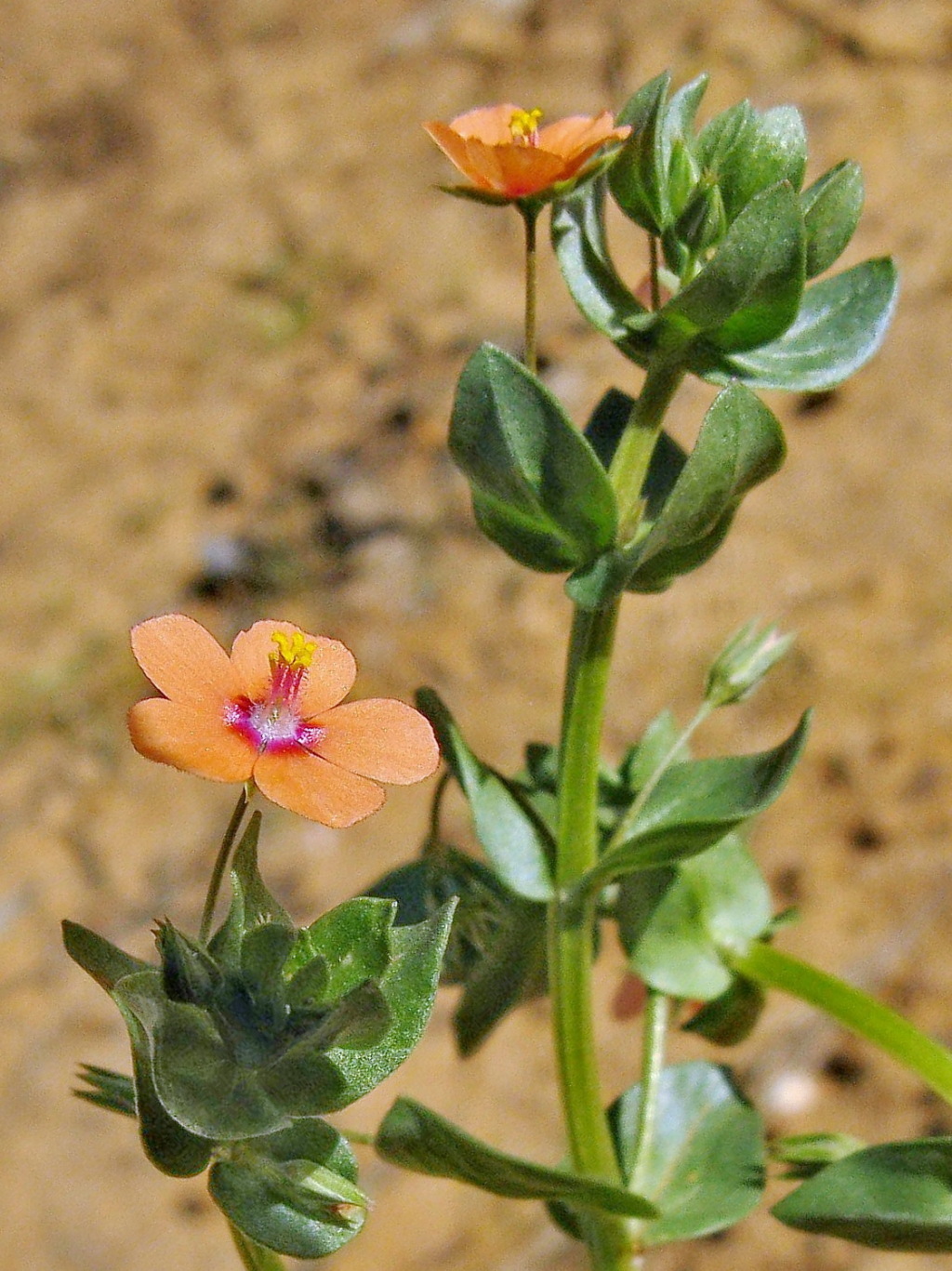Lysimachia arvensis
(L.) U.Manns & Anderb. PimpernelGlabrous herb, stems strongly 4-angled. Leaves opposite, sessile, 8–20 mm long, 5–13 mm wide, glabrous, 3-several-nerved from base. Flowers on fine, often decurved pedicels 1–3 cm long; calyx-lobes 5, very shortly united at base, narrow-acuminate, 3–5 mm long (elongating to c. 7 mm in fruit), keeled along the midrib; corolla rotate, lobes broadly elliptic, slightly exceeding calyx lobes, minutely glandular-ciliate on margin, red, orange-red, blue, purple or rarely white; staminal filaments ciliate. Capsule c. 4 mm diam., dehiscent about the equator; seeds angular, elliptic or c. rectangular, c. 1.2 mm long, blackish, minutely papillate. Flowers mainly Sep.–Mar.
LoM, MuM, Wim, GleP, Brid, VVP, VRiv, MSB, RobP, MuF, GipP, OtP, WaP, Gold, CVU, GGr, DunT, NIS, EGL, EGU, WPro, HSF, HNF, OtR, Strz, MonT, HFE, VAlp. All States and Territories except NT. Europe. Widespread and common on disturbed ground, in gardens and crops, roadsides, beside paths, etc.
Lysimachia arvensis is well-known for its flower-colour polymorphism, with red or orange-red and blue-flowered morphs. The blue-flowered morph has been known under several different names in Australia including Anagallis arvensis var. caerulea (L.) Gouan, and Anagallis arvensis subsp. foemina (Mill.) Schinz & Thell. More recently the combination Lysimachia arvensis var. caerulea (L.) Turland & Bergmeier was published. The blue-flowered morph has alternatively recently been recognised as a separate species, L. loeflingii, based on differences in the ITS nuclear DNA sequences that are maintained between blue and red-flowered morphs that have been sequenced, even when co-occurring (Jiménez-López et al. 2022). This name was selected by Jiménez-López et al. (2022) because Linnaeus in 1753 described blue-flowered plants from specimens collected by Loefling in Spain, and because the earliest available epithet for this species, latifolia, already exists in Lysimachia for a different taxon. While minor sequence divergence exists between blue and red-flowered morphs in ITS, DNA of various chloroplast regions sequenced have shown no differences between red- and blue-flowered morphs. Likewise, there are no differences in ploidy or other visible differences other than flower colour that can distinguish these putative species. Additionally, in Australia the two forms co-occur so frequently, even growing side-by-side, which seems unlikely if they were not both descendants of the same colonising seed. There are also additional colour forms such as white, which would be of uncertain placement in either of the red- or blue-flowering species. Plants with purple or salmon-pink flowers have also been recorded, which may or may not represent crossing between the red-and blue-flowered morphs. For all these reasons, both the blue- and red-flowered morphs are maintained within Lysimachia arvensis here.
Jiménez-López, F.J., Viruel, J., Arista, M., Ortiz, P.L. & Talavera, M. (2022). Molecular approaches reveal speciation between red- and blue-flowered plants in the Mediterranean Lysimachia arvensis and L. monelli (Primulaceae). Botanical Journal of the Linnean Society 199(2): 557–577.
 Spinning
Spinning



